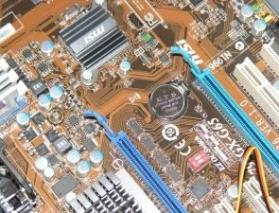Pagans have lived in cities, and loved living in cities, since the very start. Although ancient pagan temples and shrines existed in rural or sometimes even wild areas, ancient pagans didn’t automatically run out to the countryside to worship. On the contrary, they built great temples in their cities – think of the Parthenon. This is true for the ancient Greeks, Romans, and Egyptians. It’s true for the Celts and the Norse. The great temples of the Mayans and Aztecs were built in their cities. Pagan life was urban life.
But contemporary paganism (neopaganism) often seems committed to pastoralism. Pastoralism is a specific and highly modern view of nature. It’s a highly idealized, and highly distorted, view of nature. Pastoralism depicts nature as beautiful wilderness, untouched by human hands or plows. It contrasts nature with cities. Cities are depicted as anti-natural or evil. Thus modern pagans should try to escape from their cities to practice or to perform their rituals. Or at least try to find some green space in their cities. The Goddess and the God don’t live in cities – they live out in the forest or the fields.
There are lots of problems with pastoralism. Pastoralism is a distorted view of nature. It systematically ignores the dark side of nature – the endless violence and brutality, the death and decay. Or maybe they get acknowledged briefly in some cartoonish gesture to the “circle of life”. As part of its denial of the dark side of nature, pastoralism creates a false equation of “natural” with good. Arsenic and radon gas are both natural, and equally poisonous. Pastoralism creates false dualisms. It opposes humans to nature and cities to wilderness. But humans are entirely natural. And cities are just as wild as the wildest national park. Times Square is as natural as the rain forest. Pastoralism is an alien way of living for most Americans. Most Americans today live in cities, or at least very close to them. Almost none of us are farmers, and very few of us would want to live like the Amish. The agricultural wheel of the year is irrelevant.
Human beings are animals. We are homo sapiens, evolved on earth. Everything we do is natural. We are tool-using animals, and tool-use is natural. Many animals besides humans make and use tools. Spiders weave webs; birds build nests; beavers build dams and lodges. When a human uses a stone to chop down a tree, that’s an entirely natural action. It’s natural for humans to use technologies to build cities and temples. Technology isn’t anti-nature; technology is part of nature.
Forests are cities of trees, connected by enormous underground webs for signaling and resource exchange. When ants and bees make their colonies and hives, they are exercising their natures to build insect cities. Termites build cities. Their mounds involve remarkable insect technologies. Birds sometimes build large nests housing large communities. When we build cities, we are putting our human natures into action. All cities are great natural growths, the highest expressions of organic creativity. Cities are emergent organisms. Ant-colonies and termite mounds are super-organisms. Human cities are also super-organisms. They have arteries and nervous systems.
Cities are complex ecosystems. Besides humans, New York City contains our commensal animals – dogs, cats, and others. There are urban beekeepers. It also contains animals that parasitize humans, like cockroaches, rats, and pigeons. Not to mention bedbugs and fleas, and the yersinia pestisbacteria that caused the Black Death. Cities also get sick. But cities provide habitats for animals only indirectly engaged with humans. New York City is filled with squirrels and raccoons. We also have coyotes and deer. And our skyscrapers and bridges make great habitats for raptors. You’ll probably find more hawks and falcons here than in many forests. And Riverside Park, in New York City, sometimes hosts bald eagles. Since New York is mostly a city of islands – an urban archipelago – we have many aquatic species. Seals play in the harbor. Whales have swum up the Hudson under the George Washington Bridge. The animals that live in cities are not aliens. Riverside Park is filled with raccoons. These are urban raccoons, they are settled inhabitants, this is their home. New York City is as much a city of non-human animals as it is a city of human animals.
Cities can be sublime. The scale of New York City inspires astonishment in many visitors. It sheer magnitude inspires awe and wonder, even among long-time residents. Our towers reach to the heavens. Modern skyscrapers reach up towards the sun like ancient temples. Cities are like crystals. Cities are numinous and holy. When you encounter a city, you encounter a superhuman organism, a hyperobject distributed in vast and strange ways through time and space. Cities are ancient. If cities are alive, then Damascus may be the oldest living organism on earth.
Many ancient deities were technologists. The Greek god Hephaestus and the Yoruba orisha Ogun were divine engineers. Athena was a goddess of the craft of weaving and Apollo was a god of the craft of medicine. Far from rejecting technology as unnatural, many ancient pagans regarded technology as divine. Cities are themselves godlike. Their scale and detail make them divine. Cities are superintelligent. Many human minds come together to form an urban group-mind or hive-mind. Athena, the goddess of intelligence, had her great temple in Athens. New York City has more computing power than any ancient deity. Its computational intensity makes it a fit temple for a modern Athena – or perhaps it just is a modern Athena. Cities deserve reverence.
But don’t cities have too much negativity to deserve reverence? Cities are filled with filth, with crime, and with extraordinary injustice. The soaring towers of New York were built from the great economic inequality of capitalism. The coronavirus makes it plain: the great population density of New York made it fertile ground for disease and death. Would you prefer to ignore these dark features of nature? Farms are also saturated with filth, crime, violence, disease, and death. The countryside is a Darwinian war of all against all, red in tooth and claw. Even the trees try to kill each other. Or perhaps cities are just too human to deserve reverence. We know our faults. But cities are places where we can work out our salvation by striving for our ideals. Are cities filled with injustice? Then they are the places where it must be transformed into love.
Lots of pagans talk about energy, or have a kind of animist vision of nature. Given the alleged pagan commitment to nature, you’d think pagans would turn to physics to learn about the energies flowing through nature. But you’d be wrong. Here’s another way that pagan pastoralism distorts nature: instead of using science to understand nature, it turns to woo. Pastoralism turns nature into a human fantasy. By rejecting pastoralism, perhaps urban pagans can help other pagans focus more accurately on nature as it really is, rather than nature as we wish it would be in our dreams.
Enormous quantities of energy flow through cities. And this is real energy – not some fictional occult energy. It’s physical, it’s natural. If you live in a modern city, you are living in one of the most extremely intense things in the known universe. The ancient Stoics thought of their deities as personifications of the universal physical energy that flows through all things. Thus Ceres was the universal energy flowing through grain, and Poseidon was the universal energy flowing through the sea. So modern urban pagans, if they want deities, can create personifications of the energies flowing through their cities. We can celebrate the god of the electrical grid, the goddess of the subways, the deity of the skyscraper. We can even use ancient deities here.
Many ancient Roman deities referred to urban practices or structures. The goddess Annona was associated with the grain supply to Rome. She is a goddess of supply chains. Cloacina was the Roman goddess of sewers. Fornax was the goddess of ovens and bread-baking. Portunus was the god of keys, doors, livestock, and ports. All these deities can be rehabilitated as the deities of modern cities. Mercury was a god of commerce and communication, as well as the god of thieves. On all points, Mercury is the god of the internet. The Egyptian god Thoth is the deity writing and magic. If magic is the use of symbols to control the physical world, then computer programming is magic. Of course, programming is natural magic – it is magic that works. It takes its sigils from C++ and Java. So Thoth is the god of computers. And if magic is programming, then cities are the most magical places on earth. They are the physical structures most regulated by codes. New York City runs more lines of code then any place on earth; it probably runs more lines of code then any place in the known universe.
Modern urban pagans can think of their deities in entirely naturalistic terms. Consider any complex urban network – the electrical grid, the subway system, the communications network, the road system. Energy courses through all these systems. And the energy that moves through these systems carries information. The Stoics, who were pagan thinkers in ancient Greece and Rome, used the Greek term pneumato refer to informed energy. This term entered Latin as spiritus, and came into English as spirit. Spirit in this sense isn’t woo woo. It’s studied by thermodynamics, information theory, computer science. Techno-pagans think of computer networks, and other technological networks, as animated by spirit. Those networks are sacred, pulsing with divine life. For techno-pagans, technology itself is sacred. Cities are shrines, are temples.
If we think of spirit as informed physical energy, then spirit courses through our technological networks. They are informationally integrated. According to psychologists like Tononi, degrees of informational integration are degrees of consciousness. There’s nothing unscientific about saying that subways and road networks are complex autonomous information-processing systems. If Tononi is right, then all these urban systems have their own degrees of consciousness. It’s urban panpsychism. Here urban pagans can naturalize some concepts from chaos magic. You don’t produce thought-forms by occult magic – you produce them by coding. Every line of code written for the regulation of the subway is part of its thought-form. The subway is a servitor; the communications network is an egregore. But these are purely physical things.
To think of the New York subway system as a natural goddess to appreciate its complexity using all the sciences. To think of it as a goddess is to conceive of it as an organic whole, an emergent unity, a great living thing. It resembles an organism, to be thought about in biological terms. It resembles the root networks of forests, the rhizomes. Electrical energy flows through its rails and motors. And it has its own nervous system, a vast web of cables, signals, switches, and computers. It is a super-human structure, animated and regulated by hundreds of human animals. It stretches in all four directions, the four elements are intimately involved with it. It has its own wildness – including its own human wildness. It resembles the human subconscious, the underworld. To travel on it is to enter the earth and emerge again. On the one hand, you can regard the subway as a purely mundane or profane artifact. On the other hand, you can enchant it with a wide range of entirely natural yet profoundly poetic and sacred meanings. An urban pagan sees the city in sacred terms.
Urban pagans probably aren’t going to have much interest in celebrating the eight solar holidays as agricultural festivals. But we can celebrate them as solar holidays. And we have our own entanglements with the sun. Manhattanhenge (the Manhattan Solstices) are days when the sun rises or sets in exact alignment with the east-west street grid. So the sun rises or sets between the risen buildings like the stones at Stonehenge. New York City parks already host many summer solstice celebrations. Urban pagans can perform many aspects of pagan rituals as well as pastoralists. We can call the quarters and the elements. New York has statues of pagan deities: Mercury adorns Grand Central; Atlas and Prometheus have their shrines at Rockefeller Center; the Great God Pan relaxes at Columbia University. Any ancient pagan would recognize the meaning of rubbing the testicles of the Charging Bull. And any ancient Roman would recognize the Statue of Liberty as a deified abstraction. If our cities have buildings for the Abrahamic faiths, they can come to incorporate pagan shrines and temples too.
There are plenty of things for urban pagans to do, either as solitaries or in groups. Many urban art museums have collections of statues of ancient deities, or other exhibitions related to ancient pagan cultures. So pagans can go on thematic trips to museums or other cultural centers. Many cities have bee-keepers, and the analogies between bee hives and cities are obvious. Keeping bees, for those who are able, is a great way to acknowledge the ecological links that bind all living things together. Many cities have science museums or natural history museums, where urban pagans can reflect on the real structure of nature, the structure revealed by science. By visiting these museums, we can honor nature as it really is. New York City has the Hall of Science, in Queens, which has been called a cathedral. Cities often host concerts or musical events by groups with pagan orientations. Heilung played sold-out shows in many North American cities, including New York. In the After Time, when science has defeated the virus, urban pagans will be able to go to those events again.
In the Before Time, many cities held drum circles – fine pagan events! In the After Time, they will come out again. And decades ago, deeper in the Before Time, there were raves. Sometimes these were structured as pagan events, with altars, opening and closing ceremonies, and so on. Raves were sites of techno-paganism and techno-shamanism. For the urban techno-pagan, electronic dance music is pagan music. Its mathematically well-structured rhythms lead us into trances, and reflect the mathematically well-structured energies flowing through our cities. Perhaps further into the After Time, raves will emerge again too. It is even possible that, in some further After Time, our cities may host transformational festivals. We can dream of something like Burning Man on Governor’s Island. But there are endlessly many future opportunities for urban pagans.













